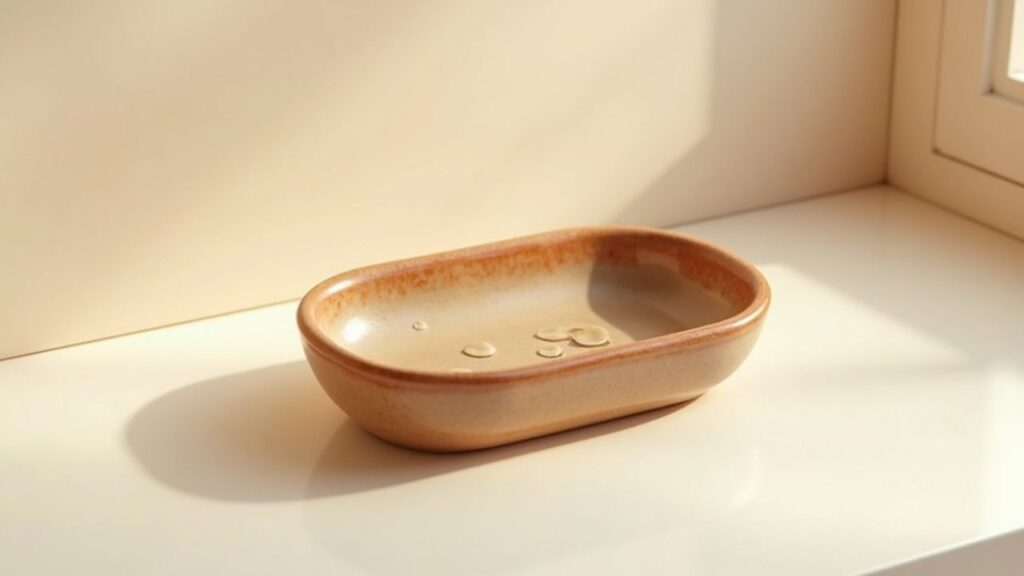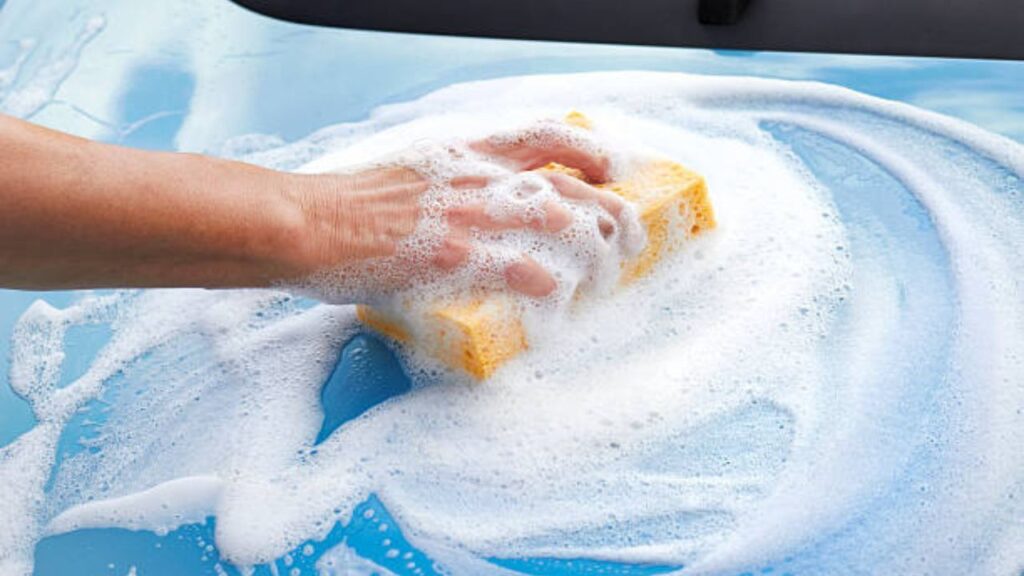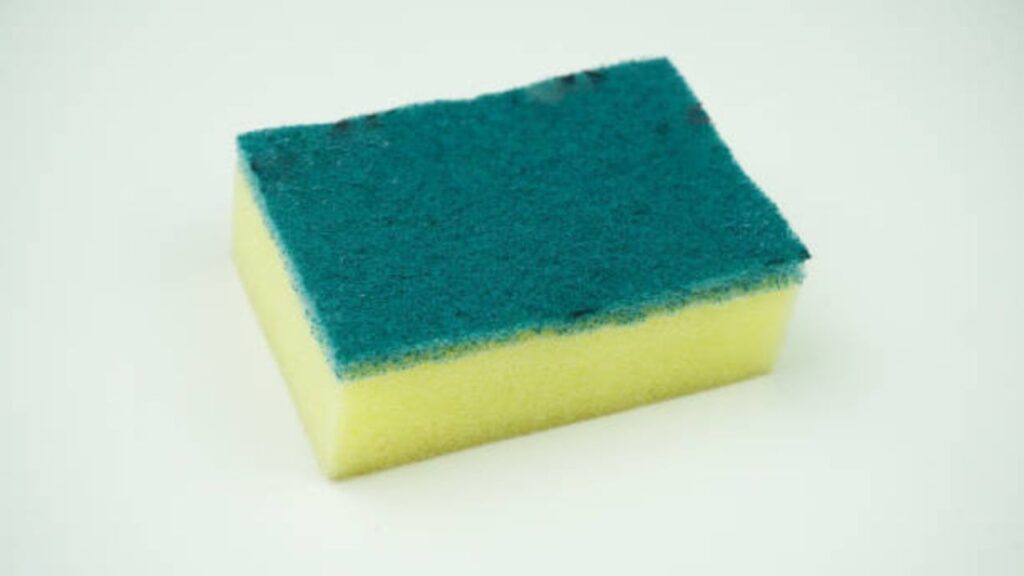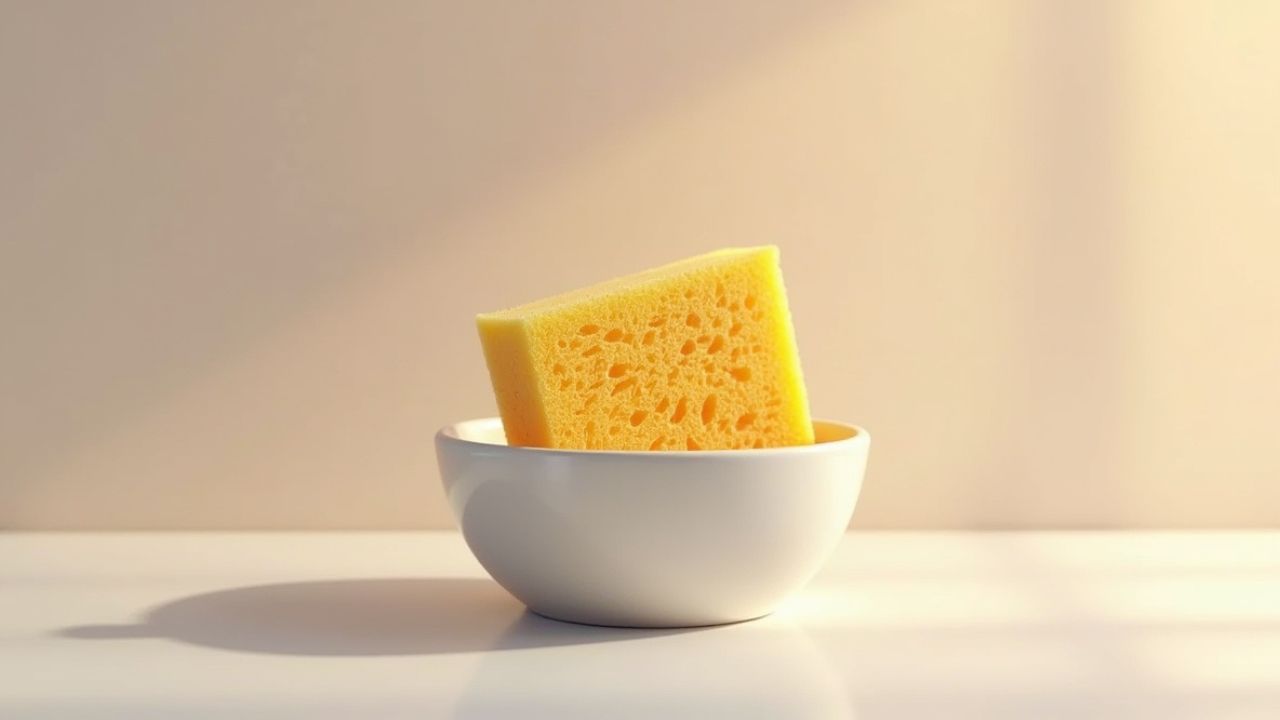In the contemporary kitchen—where form meets use—ceramic sponge holder have become unsung heroes of both utility and design. These additions, which combine creativity with practicality, turn messy counters into well-curated areas far beyond just a storage solution. Demand for items that combine design with use has surged as kitchens become centers for cooking, socializing, even remote work. This all-inclusive book explores the world of ceramic sponge maker holders, their advantages, many designs, service secrets, and even their origins in culture, therefore demonstrating why every house should have one.

What Is a ceramic sponge holder?
Designed particularly to store and organize tools, sanitation workers, or the kitchen sponges, this ceramic sponge holder is a carefully constructed vase. These strong, non-porous, kiln-fired clay holders range in shape from basic to ornate. While ceramic’s weight guarantees stability on busy counters, its smooth surface prevents bacterial development unlike that of plastic substitutes. These holders increase airflow by raising sponges off surfaces, therefore lowering moisture accumulation and smells. More than just practical, they are little sculptures that accentuate counters and sinks with a hint of refinement.
Why Ceramic Reigns Supreme: Material Advantages Explored
Choosing ceramic over other materials offers a trifecta of benefits:
Hygiene First:
Ceramic’s non-porous surface naturally resists mold and germs as it absorbs neither food particles nor water. According to a 2021 Journal of Environmental Health research, sponges kept in ceramic holders dried 30% faster than those kept in plastic caddies, therefore drastically slowing down bacterial development.
Durability ceramic sponge holder Design:
Compared to plastic that may deteriorate over time, high-fired ceramics are chip-resistant and may survive regular usage without fading or warping. Whether your kitchen is farmhouse, modern, or eclectic, its classic charm guarantees it never goes out of fashion.
Eco-Conscious Choice:
Made from natural clay, ceramics are biodegradable and devoid of dangerous chemicals including BPA. Choosing ceramic helps you cut dependency on single-use plastics and help to create a cleaner earth.
Versatility:
Maximizing their value in tiny kitchens, many ceramic containers serve as cutlery stands, soap basins, or even small plants.
A World of Styles: Finding Your Perfect Match
Like the kitchens they accentuate, ceramic sponge users are as varied. Here is a well selected overview of current fashion:
Minimalist Modern:
Think matted white, charcoal, or sensible green in color; sleek, monochrome designs with straight lines. Understated items like this are strongest for companies like H&M Home, Zara, and West Elm.
Artisan Crafted:
Painted by hand the owners from places like Mashiko (Japan) as well as Oahu (Mexico) include geometric designs, floral themes, or complex patterns. Usually reflecting centuries-old ceramic customs, these works convey a tale.
Whimsical & Playful:
According to fruit-inspired patterns to animal-shaped holders (think of cheerful whales or simple cats), they give family-friendly kitchens some individuality.
Rustic Charm:
Textured, matte surfaces in earthy tones—terracotta, a reddish or speckled stoneware— create a homey, rustic atmosphere.
Luxe Accents:
Perfect for modern or glam cooking areas, gold or platinum coatings, metallic inlays, or geometric designs transform ceramic holders into statement objects.
Choosing the Right ceramic sponge holder: A Step-by-Step Guide
Selecting the ideal ceramic sponge holder requires balancing practicality and aesthetics:
Assess Your Space:
Calculate your sink or flooring area. Compact owners (6-8 inches wide) with vertical storage save room in small kitchens. Bigger kitchens might allow for dramatic, sculptural designs.
Prioritize Functionality:
To keep sponges dry, find high ridges or drainage holes. If you keep many brushes or sponges, use dual compartments. To stop tipping, think of a weighted base.
Harmonize with Your Decor:
Match glazes to current cooking highlights. A cobalt blue holder contrasts with white subway tiles, for instance, while a subdued sage accentuates wooden counters.
Quality Check:
Excellent porcelain should feel robust and have an evenly glaze. Steer clear of thin, light parts that can break readily.

Beyond Storage: Unexpected Benefits of ceramic sponge holder
Enhanced Kitchen Safety:
Ceramic holders help to lower the chance of spills or mishaps close to sinks by gathering slippery sponges.
Odor Control:
Good ventilation reduces musty odors. For extra freshness, several companies treat ceramic with antibacterial layers.
Decorative Flexibility:
To update the decor of your kitchen without a complete renovation, swap holders seasonally—a pastel floral pattern for spring, a rich amber varnish for fall.
Conversation Starters:
A handcrafted holder from a nearby artist or an antique flea market discovery lends individuality and ignites interest.
Care & Maintenance: Preserving Beauty for Decades
With proper care, ceramic sponge holders can last a lifetime:
Daily Cleaning:
Rine with mild dish soap and warm water. Steer clear of rough sponges likely to scratch the glazing.
Deep Cleaning:
Soak in a 1:1 vinegar-water mixture for tough stains; then, lightly scrape with baking soda.
Preventing Hard Water Marks:
Dry the holder with a microfiber towel following each use in hard water locations to prevent mineral buildup.
Chip Repair:
Fine-gritting a piece lets you smooth small chips. See a professional or apply food-safe epoxy for more damage.
Seasonal Refreshes:
Occasionally rotate the holder’s position to prevent uneven sun fading on countertops.
Top Brands to Elevate Your Kitchen
Le Creuset:
Celebrated for their brilliant, enameled ceramic holders, which reflect their famous cookware.
Anthropologie:
presents varied, bohemian-chic motifs like heavenly patterns or hand-painted Moroccan tiles.
East Fork Pottery:
Perfect for minimalist settings, sustainable, US-made clay in subdued tones.
Emile Henry:
Heat-resistant ceramic for adaptable application combines current innovation with French workmanship.
Local Artisan Markets:
Local craft fairs and websites like Etsy highlight unusual, one-of- a-kind items supporting local entrepreneurs.
DIY ceramic sponge holder: Unleash Your Creativity
For a personalized touch, try these DIY ideas:
Upcycle a Thrifted Piece:
Drill slots for drainage (using a diamond-tipped cut bit) and colors an antique ceramic bowl food-safe sealant.
Hand-Building with Clay:
Roll at air-dry clay into a square tray; shape boundaries into shouts or curves; then, paint with acrylics. Seal with a varnish that is weatherproof.
Decoupage Magic:
Employing Mod Podge on Dishwasher-Safe Sparkle, adhere waterproof decals or patterned tissue paper to a simple container.
Stamp & Stencil:
Print plant motifs onto bisque-fired pottery using stencils or rubber stamps; then, glaze and fire.

Sustainability Spotlight: ceramic sponge holder Green Credentials
Eco-Friendly Production:
Many ceramic artists now cut their carbon footprint by using solar-powered kilns and recycled clay.
Longevity:
Made well, this ceramic holder keeps trash out of landfills by outlasting hundreds of material replacements.
End-of-Life Options:
Emphasizing a zero-waste approach, broken porcelain may be crushed for garden paths or used as mosaic art.
Cultural Threads: ceramic sponge holderThrough the Ages
Ceramic art is deeply rooted in global traditions:
Japan’s Raku Ware:
Reflecting the Zen idea of wabi-sabi (beauty in imperfection), this is distinguished by asymmetrical shapes and crackling glazes.
Italian Maiolica:
Still made in villages like Deruta, Renaissance-era tin-glazed ceramics with detailed pastoral landscapes shows.
Native American Pottery:
Symbolic of cultural tales, tribes like the Acoma Pueblo make amazing black-on- white artwork. Selecting a holder influenced by these customs pays respect to history and gives your kitchen earthly flare.
The Future of Kitchen Organization
Innovations to watch for in ceramic sponge holders:
- Smart Integration:
Built-in UV-C lights to sanitize sponges automatically. - Modular Systems:
Stackable or magnetic holders that attach to range hoods or backsplashes. - Biodegradable Glazes:
Plant-based, non-toxic finishes for eco-conscious consumers. - Customizable 3D-Printed Designs:
Tailor-made holders matching your kitchen’s exact dimensions and style.
Ceramic vs. Plastic vs. Metal Sponge Holders
| Feature | Ceramic 🏺 | Plastic 🥤 | Metal 🥄 |
| Hygiene | 🟢 Non-porous, resists germs | 🔴 Traps moisture & bacteria | 🟡 Rust-prone if not dried |
| Durability | 🟢 Lasts years, chip-resistant | 🔴 Warps/fades over time | 🟡 Dents and scratches |
| Aesthetics | 🟢 Elevates your kitchen vibe | 🔴 Looks cheap (sorry, not sorry) | 🟡 Industrial, cold feel |
| Eco-Friendly | 🟢 Natural materials, recyclable | 🔴 Adds to plastic waste | 🟡 Energy-heavy production |
| Versatility | 🟢 Doubles as décor or soap dish | 🔴 Limited to basic use | 🟡 Sharp edges, less safe |
Final Thoughts
Beyond its basic function, a ceramic sponge holder becomes evidence of careful design and environmentally friendly living. Whether your taste is for a sleek modern design or a hand-thrown artisan work, you are investing in both elegance and utility. Choosing ceramic helps you create an environment that expresses mindfulness, care, and creativity rather than simply arranging your kitchen. All set to change the sink area? Look into ceramic sponge holders now to see how little elements could have a big impact.
FAQ’s
1. Why is ceramic better than plastic for ceramic sponge holder?
Non-porous, ceramic inhibits germs, and dries sponges more quickly. It is also eco-friendly and more robust than plastic!
2. How do I clean a ceramic ceramic sponge holder?
Simply rins with pleasant, soapy water. Use baking soda for difficult stains; steer clear of harsh scrubbers to preserve the glazing.
3. Can ceramic holders match my kitchen’s style?
Exactly! To fit any décor, they abound in simple, minimalist, rustic, even whimsical forms.
4. Are ceramic sponge holder holders eco-friendly?
Definitely yes. Made from natural resources, ceramic surpasses plastic in durability; many manufacturers also apply sustainable manufacturing techniques.
5. Do ceramic holders work for brushes or dish soap too?
Sure! Many are flexible for kitchen storage as many feature sections for brushes or serve as soap dishes.
